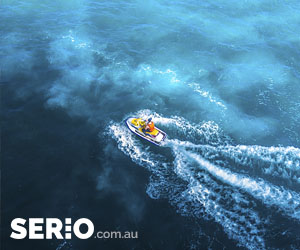The NBL was launched in 1979 with 10 clubs including two clubs from South Australia - the West Adelaide Bearcats and Glenelg Tigers. West Adelaide was immediately competitive, finishing fourth in the inaugural season and supplying the League with its first MVP, Ken Richardson. But Glenelg had a struggle, both financially and competitively, finishing dead last. The Glenelg Tigers withdrew and in 1980, the expanded 12-team NBL included West Adelaide, and in Glenelg Tigers place, the West Torrens Eagles. The Bearcats again flourished, reaching the grand final but the Eagles plummeted, finishing 11th. But Torrens battled on in 1981, changing its name to Forestville Eagles.
West Adelaide was prominent once more, reaching the play-offs before finishing third. Forestville, however sank still further, finishing rock bottom last. In 1982 Forestville, no longer able, financially or competitively to continue in the growing league, withdrew at the death knoll of the season start and no other South Australian club had the resources or personnel to join West in the big league. The remaining seven State League clubs instead decided to pool their resources to make one composite team, a hastily thrown together group which played the 1982 season as Adelaide City, its nickname - the Eagles - in deference to the withdrawn Forestville club.
Adelaide's performance in 1982, with imports Reg Biddings and David Winslow, was extremely creditable, the team finishing seventh in the 14-team competition with a 15-11 record. Of course, a lot of that gloss was lost in West Adelaide's remarkable achievement of winning the NBL Championship with a side which included Leroy Loggins, Al Green, Richardson, Brad Dalton, Ray Wood and Peter Ali. How good would Adelaide's team have been with those players joining the likes of Darryl Pearce and his teammates? The answer to that was not long in forthcoming.
In 1983, Adelaide dropped the City Eagles from its name and became instead the Adelaide 36ers. The nickname, of course, refers to the city of Adelaide's founding date of 1836. In 1983, Adelaide maintained its competitiveness while West Adelaide, this time with Andy Cambell manning the middle and with a rookie called Mike McKay, made it all the way to the grand final. In 1984, as the 36ers marched into their first final series, the bottom finally fell out of West's brave solo NBL program, the Bearcats suffering their first and only losing season, finishing 10th in the 17-team competition. Adelaide lost the elimination final to Nunawading 101-108, as it became more and more apparent that, if South Australia fielded one composite team instead of dissipating its playing strength, the State would boast one of the NBL's strongest combinations. So it was then in 1985 that West Adelaide withdrew from the NBL as a club in its own right and embraced instead the composite Adelaide 36ers program.
The SA Brewing company immediately supported the new club, which became the West End 36ers. West Adelaide actually supplied six players to the 1985 36ers team, plus its coach Ken Cole, who replaced Adelaide's mentor through 1982-84, Mike Osborne. And predictions that the Sixers would be a force were well and truly substantiated as the club stormed into the grand final against Brisbane, posting a record semi-final score (151) and winning margin (48) over Newcastle along the way. Playing at home in the last NBL single-game grand final, Brisbane turned back the 36ers 121-95 but that merely firmed Adelaide's resolve for 1986. That year, as South Australia celebrated its 150th birthday, the West End 36ers totally dominated the NBL, completing the regular season with an extraorddinary 24-2 win-loss record . . . and both losses were by a basket in controversial circumstances.






